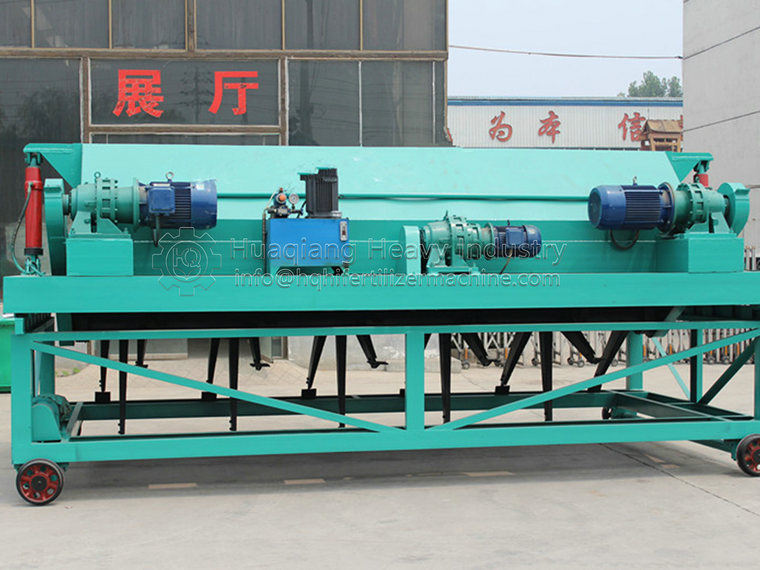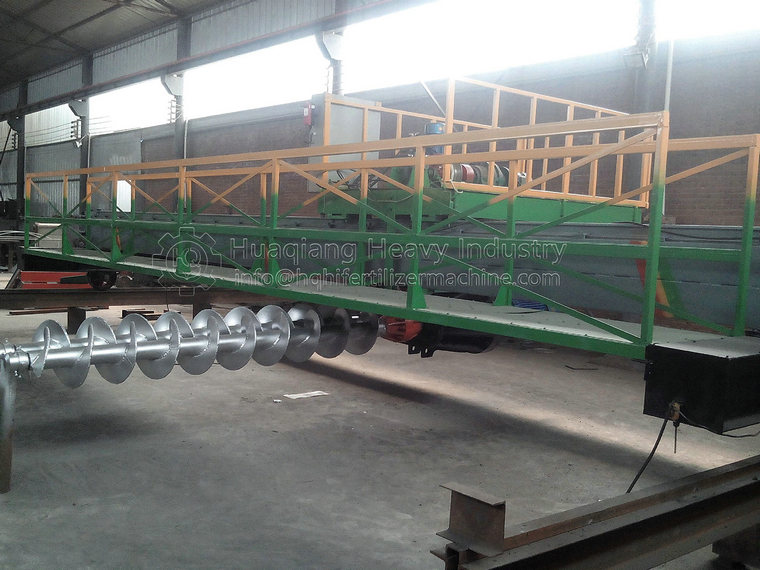In the modern organic fertilizer production process, the hydraulic organic fertilizer turning machine is undoubtedly a crucial link, and its unique working process provides strong support for organic fertilizer fermentation.
Before the formal operation, the staff will carefully select various organic materials, such as livestock manure, plant residues, etc., and stack them in designated areas after reasonable proportioning. At the same time, according to the fermentation requirements, add an appropriate amount of fermentation bacteria to prepare the “catalyst” for the upcoming fermentation journey.
All preparations are ready, and the hydraulic organic fertilizer turning machine starts with a loud roar. Based on advanced hydraulic transmission principles, the power system of the machine provides stable and powerful power to various working components. Firstly, the hydraulic driven walking device drives the body smoothly towards the material pile. This device can flexibly adjust the speed and direction of travel according to the actual situation of the site, and can easily cope with complex terrain.
After arriving at the material pile, the highlight – the flipping process – officially takes place. The flipping device, precisely controlled by the hydraulic system, slowly descends and inserts into the material pile. These flipping devices are usually cleverly designed, some with wide buckets and some with special toothed rakes. Under the strong hydraulic thrust, they effortlessly cut into the material and chop it into large pieces. Next, the flipping device flips at a specific angle and force, flipping the material that has been in an anaerobic state for a long time at the bottom to the surface, allowing it to fully contact the air; Meanwhile, materials rich in oxygen on the surface are carried into the lower layer. In this way, the materials are fully mixed, creating a nutritionally balanced and oxygen rich “living environment” for microorganisms.
During the flipping process, the hydraulic system can also adjust the flipping depth and force in real time. Based on different fermentation stages and material characteristics, operators can precisely control through the control panel to ensure that each flipping is just right. For example, in the early stage of fermentation, the material is relatively loose, and the depth of flipping can be slightly shallow; As fermentation progresses, the material gradually solidifies, and then the depth of flipping is appropriately increased.
Continuous flipping operations allow microorganisms in the materials to proliferate in suitable environments, accelerating the decomposition and transformation of organic matter. The hydraulic organic fertilizer turning machine tirelessly shuttles through it until the material is fully fermented and presents an ideal mature state.
The hydraulic organic fertilizer turning machine, with its scientific and efficient working process, has become an indispensable core equipment in the organic fertilizer fermentation process, promoting the continuous development of the organic fertilizer industry.








